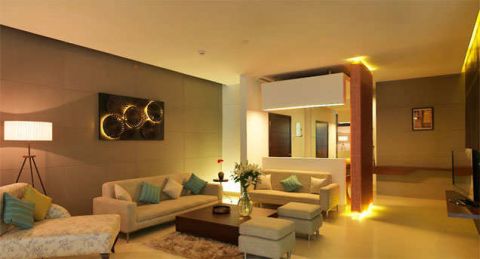Real Estate Market Comparison between New Delhi (NCR) and Mumbai (MMR): ANAROCK Property Consultants
Indian real estate sector has been consolidating over last few years. However, New Delhi (NCR) and Mumbai (MMR) are the two major real estate markets having a strong activity of end users, investors, real estate developers and financiers. Indian real estate markets for these major cities by ANAROCK Property Consultants follows.....
The nation’s financial capital or the seat of power and politics - Delhi or Mumbai. Which is the better city to live, travel or invest in? There is no easy answer
Mumbai and Delhi - two metropolises that drive India’s economy and politics, but have little in common. There are several differences in the real estate profiles of NCR (National Capital Region) and Mumbai Metropolitan Region (MMR) that are as distinct as the cities themselves.
While Mumbai scores high on strong economics and lower crime and pollution readings, it remains India's most expensive city in terms of real estate. Delhi has better infrastructure and ample land availability for further expansion. To compare and contrast the liveability quotient of NCR and MMR, one needs to cut through various numbers and parameters.
Mumbai Vs. Delhi - Economic Activity
The financial capital of the country, Mumbai is an economic powerhouse, industrial hub and also the seat of Bollywood, arguably India’s dominant film industry. From the banking and financial sector to gem and jewellery industry, and from the automobile and IT-ITeS industries, Mumbai has several important economic drivers.
According to a 2018 report by New World Health, Mumbai is 12th-wealthiest global city with total private wealth of US$ 950 billion. On the other hand, NCR’s economy is primarily led by businesses, public administration, agriculture and processed foods, real estate and IT-ITeS. As per the Economic Survey Report, Delhi's economy grew 8.61% in 2018-19 and is likely to attain the Gross State Domestic product (GSDP) of INR 7,79,652 Crore.
Delhi's satellite towns of Gurgaon and Noida are major corporate and IT hubs and have contributed to the entire region’s development. While both cities power ahead on the back of strong economic activity, MMR scores higher by virtue of being a traditional financial centre and hosting more companies and industries.
Tourism - Powering Hospitality
With its rich cultural heritage, plethora of Mughal monuments and colonial architecture, Delhi attracts tourists from far and wide. The city is part of a 'golden triangle' connecting it with Jaipur and Agra, and is on the itinerary of virtually every foreign tourist. With Delhi drawing tourists in large numbers, the hospitality industry there is always on a roll.
From five-star luxury to quaint boutique hotels and bed & breakfast options, NCR is brimming with choices for tourists with almost any budget. However, the high crime rate and ‘unsafe’ tag does hinder progress of Delhi's hospitality sector.
Mumbai also offers several tourist attractions and gives visitors a true taste of cosmopolitan living. From religious monuments, beaches, film sets and mind-boggling slums made infamous by global reportage, Maximum City is a kaleidoscope of varied and unique experiences. In fact, the state government has allocated a budget of INR 676 Cr for the first-ever tourism development plan to develop more tourist attractions in Mumbai.
Safety & Pollution - Major Concerns in NCR
The high incidence of serious crimes has earned Delhi the unenviable tag of the crime capital of the nation. The city is widely perceived as unsafe, especially by women. According to data released by National Crime Records Bureau, Delhi witnessed 1,050 IPC crime incidents per lakh of the city's population - four times the national average of 238.
Meanwhile, rising pollution levels in NCR continue to dominate headlines and bring down the liveability quotient of the city. Poor air quality may not directly impact the city’s real estate market, but it has certainly prompted home buyers to seek properties in lesser polluted areas with more open spaces.
While crime and air pollution are also problematic in Mumbai, they are low enough not to hamper the day-to-day life of the city’s residents.
Infrastructure Lag - Mumbai’s Bane
A city’s liveability is rightly measured by the infrastructure it provides to its citizens, and real estate growth is also driven largely by the development of proper roads and transport systems. In this regard, Delhi clearly trumps over Mumbai and has steadily evolved its infrastructure over the last few years.
The daily commute has been eased for lakhs of citizens via wide roads such as Noida-Greater Noida Expressway, Yamuna Expressway and Delhi-Meerut Expressway. With an operational network of 389 km, Delhi Metro covers all major parts of NCR and reaches Gurgaon, Noida, Greater Noida and Faridabad.
On the other hand, infrastructure growth in MMR has been patchy and not kept pace with the city’s population growth. Traffic snarls and congestions are commonplace as Mumbai’s road network is unable to accommodate its burgeoning vehicular traffic. While millions still depend largely on the robust suburban railway network, other modes of rapid transit such as Monorail and Metro still cover only a small section of Maximum City.
